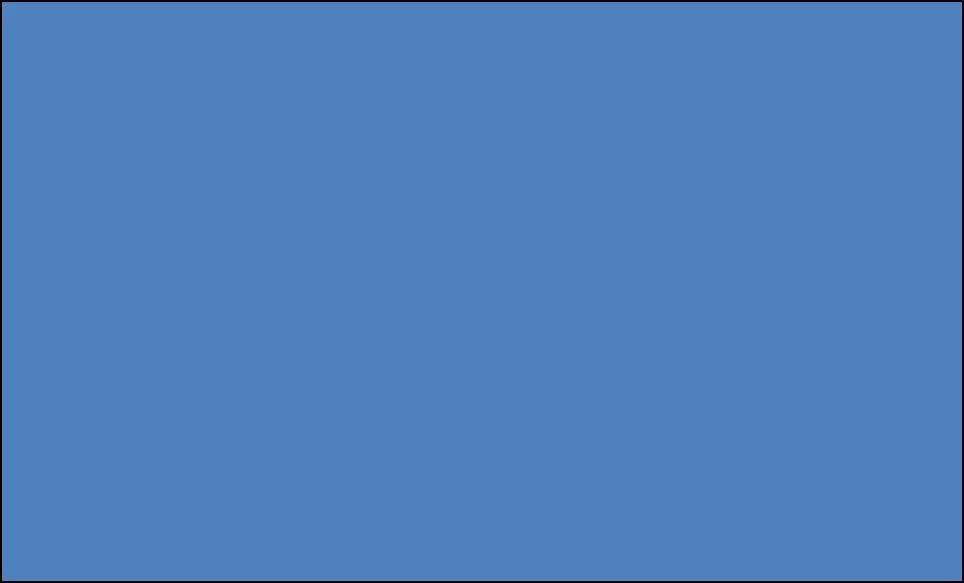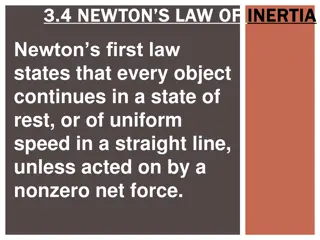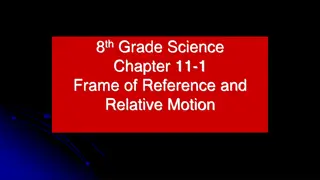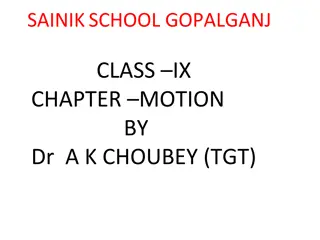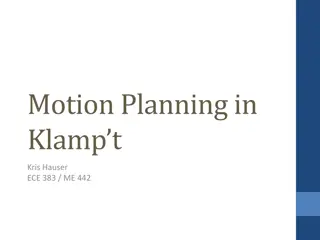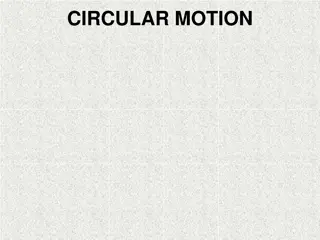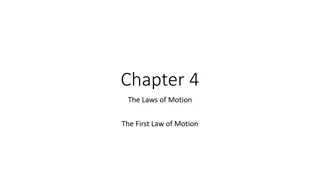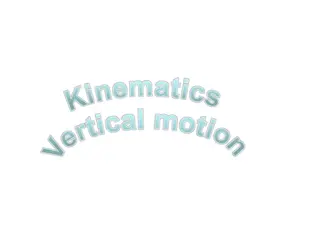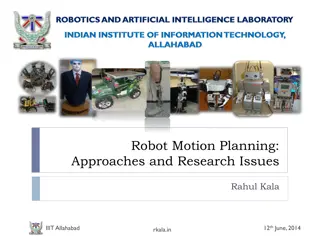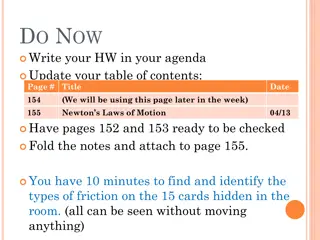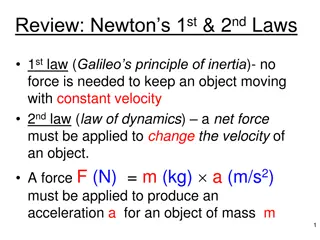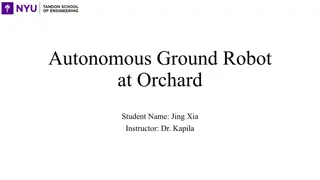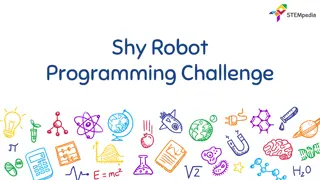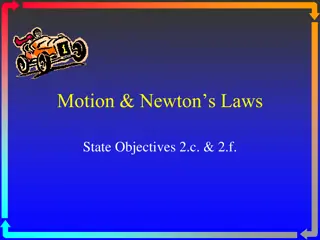Robot Motion Planning Algorithms Overview
Explore Boustrophedon Cell Decomposition, Probabilistic Road Maps, and RRT Algorithm for robot motion planning. Learn how PRMs perform in practice but can face challenges in narrow passages leading to disconnected graphs.
Download Presentation

Please find below an Image/Link to download the presentation.
The content on the website is provided AS IS for your information and personal use only. It may not be sold, licensed, or shared on other websites without obtaining consent from the author. Download presentation by click this link. If you encounter any issues during the download, it is possible that the publisher has removed the file from their server.
E N D
Presentation Transcript
Boustrophedon Cell Decomposition Critical points
Probabilistic Road Maps The algorithm produces a graph G=(V,E) as follows: LETV and E be empty sets. REPEAT Let v be a random robot configuration IF (v is a valid configuration) THEN// i.e., does not intersect obstacles add v to V UNTILV has n vertices FOR (each vertex v of V) DO Let C be the k closest neighbors of v FOR (each neighbor ci in C) DO IF (E does not have edge from v to ci) AND (path from v to ci is valid) THEN Add an edge from v to ciin E ENDFOR ENDFOR // i.e., the k closest vertices to v
Probabilistic Road Maps An example of randomly added nodes and their interconnections (roughly, n = 52 and k = 4):
RRT Algorithm The algorithm produces a tree G=(V,E) as follows: LETV contain the start vertex and E be empty. REPEAT LETq be a random valid robot configuration (i.e., random point) LETv be the node of V that is closest to q. LETp be the point along the ray from v to q that is at distance s from v. IF (vp is a valid edge) THEN add new node p to V with parent v UNTILV has n vertices // i.e., does not intersect obstacles // i.e., add edge from v to p in E s q p v
Probabilistic Road Maps PRMs perform well in practice, but are susceptible to missing vertices in narrow passages Could lead to disconnected graphs and no solution:


